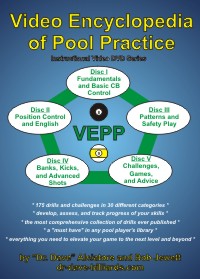Great. Thanks for the info. So you're not playing on coin-ops with an oversized cue ball. That's important info. First, learn about the balls you're using. In many cases, the cb and ob weights don't match. If the cb is lighter, you'll get more draw than you expect and less follow. The opposite is true for a heavier cb. As you change tables, check for changes in the types of balls. In many cases, the cb gets replaced and it often doesn't match the set.
Also, if the balls you use at home don't match the ones you play with in league, you will have to make some adjustments because you won't get the reaction you practiced. All this is part of practicing your awareness and being able to adjust to changing conditions.
As you become aware of these things, you will learn to feel the differences and adjust accordingly during match play. You don't have to weigh the balls to feel the differences. So, remember: Knowledge is power. Understand variations in the equipment and you'll be ahead of your opponents.
I'm always cautious of drills because they can lock you into a particular mindset that doesn't necessarily benefit you in real game play.
To me, the most important aspect of position play that made me a better player was improving my observation, awareness and memory. If you make a mistake and then forget what it was, you're doomed to repeat it. Many times, all you need is to say after the mistake is: Okay. I hit that too hard, used too much spin, not enough spin, too soft, etc. and bank it in your memory. Take it to the practice table and practice it. THAT'S your drill.
If you can improve one shot every time you practice, think of how many shots you'll improve in a week, or a year! And --- you'll be addressing YOUR specific issues.

